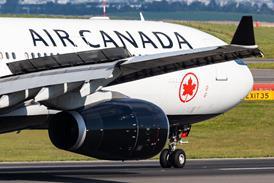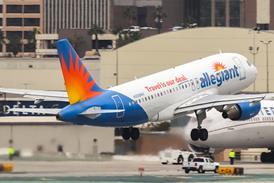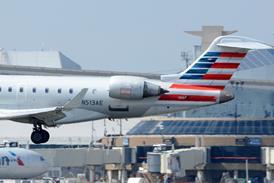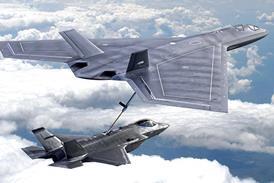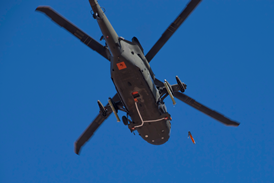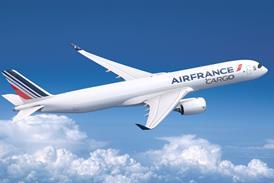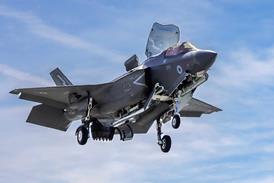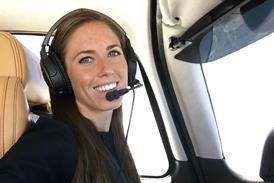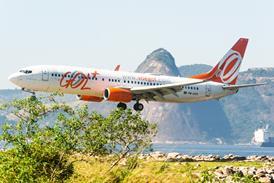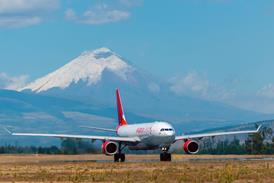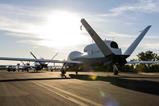Military systems integrator Sierra Nevada Corporation (SNC) has unveiled a new aircraft designed specifically for the US Navy’s (USN’s) jet trainer replacement competition.
Dubbed the Freedom Trainer, SNC says the new jet is a “purpose-built, clean-sheet design” aimed squarely at the Undergraduate Jet Training System (UJTS) contract, which is meant to deliver a replacement to the USN’s aged Boeing T-45 trainers.
SNC now joins a crowded field expected to vie for that effort, which includes Boeing’s T-7A, a Textron-led bid using the Leonardo M-346, and the Lockheed Martin/Korea Aerospace Industries T-50.
A little known firm in Upstate New York called Stavatti has also expressed an interest, though the company’s proposal is somewhat dubious.

Promotional materials released by SNC provide a number of details about the new design. The trainer features a two-seat tandem cockpit with the latest Martin-Baker Mk18 ejection seats.
The Freedom Trainer will be powered by the Williams International FJ44-4M business jet turbofan, notably in a twin-engined configuration, if a cross sectional rendering is accurate.
That would set up a divide between the likely competitors, with SNC and Textron/Leonardo competing twinjets against single-engined designs from Boeing and Lockheed/KAI.
Another notable feature of the Freedom Trainer is the ability to conduct so-called field carrier landing practice (FCLP). The navy describes this as a series of repetitive touch-and-go landings at land-based airfields, meant to simulate landing on an aircraft carrier.
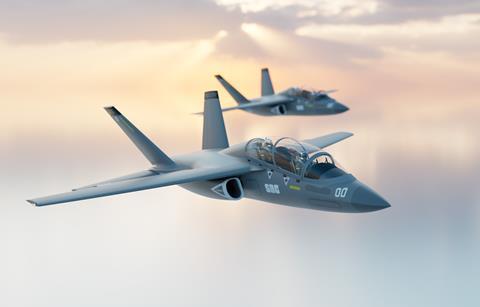
While this might seem like an essential attribute for a naval trainer, the USN earlier this year removed the requirement for the new UJTS aircraft to be capable of completing FCLP to touchdown.
“The UJTS air vehicle will only be required to conduct field carrier landing practice to wave off,” the navy said in April, citing advancements in operational platform landing modes and ground-based simulation.
“This will remove the need for potential candidate aircraft to receive complex updates such as the addition of a strengthened landing gear and tail hook,” the navy further added.
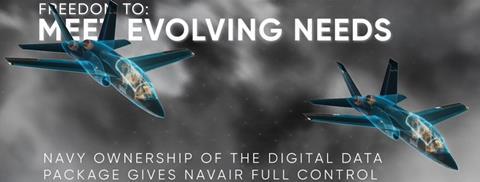
That modification came after the USN had already said the new trainer aircraft need not be capable of landing on its aircraft carriers, which use a tail hook and arresting wire system to capture returning aircraft.
The T-45 is capable of both physical carrier landings and FCLP on land.
Undeterred by that change, SNC is positioning its candidate’s ability to execute FCLP as an asset, saying its selection would ensure “student naval aviators [will] train like they’ll fight”.
The company says its airframe is rated for 16,000 flight hours and up to 35,000 carrier touch-and-go and FCLP landings. SNC also claims the jet will offer a 40% lower life cycle cost as compared to the T-45.
Jon Piatt, executive vice-president of SNC, describes the Freedom Trainer as “a training solution that not only meets the navy’s current needs but also anticipates future demands”.
The USN has not yet released a final solicitation for the UJTS, but one is expected by the end of this year.
The navy’s latest industry solicitation for UJTS indicates a final request for proposals will be issued by December 2025, with a contract awarded in January 2027.


